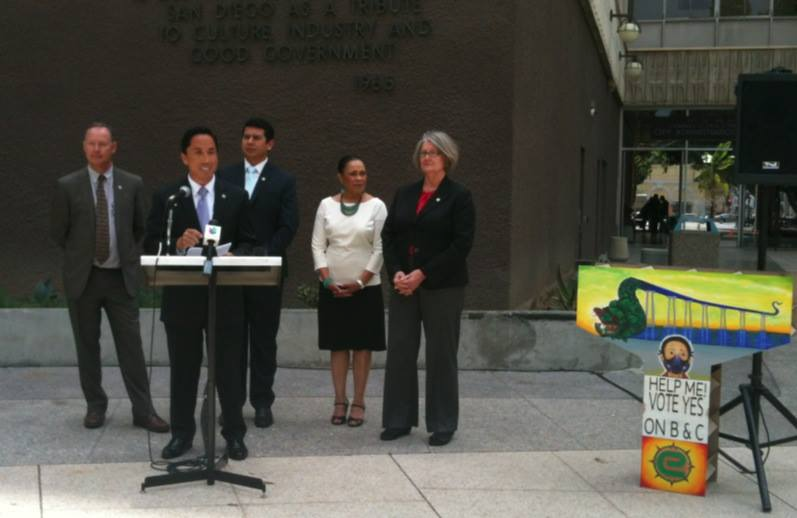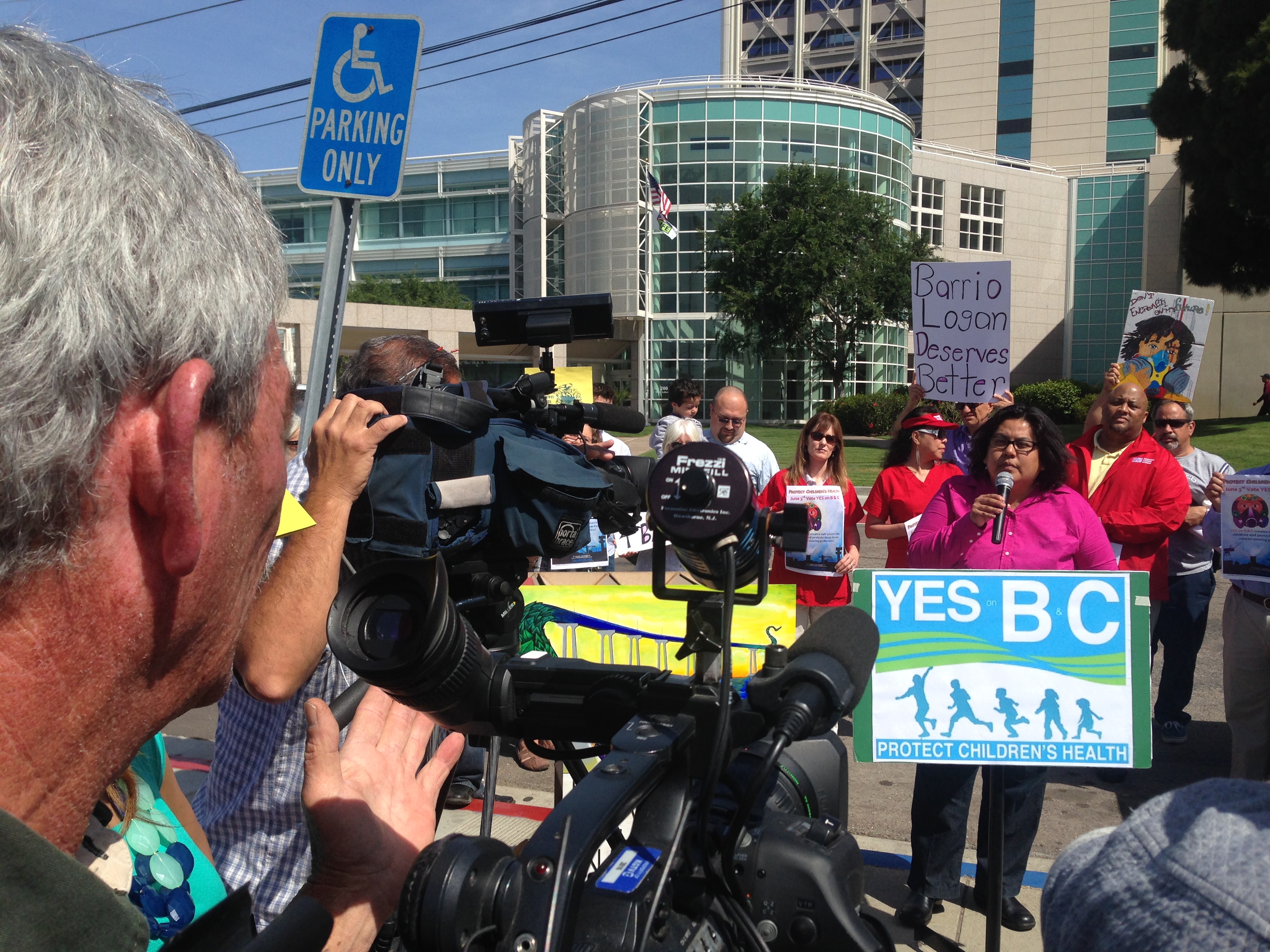Low-income communities of color have long struggled with racist land use policies and practices that diminish their health, safety and quality of life, resulting in incompatible community development due to the permitting of industrial facilities next to homes, schools and open spaces. At the root of this all-too-common pattern are discriminatory land use regulations, such as zoning, that do not protect the community's health.
The community of Barrio Logan, one of San Diego's oldest neighborhoods, currently contains an unhealthy mix of homes, schools, and industries, turning it into a microcosm of environmental racism, including:
- A community of color created by racially discriminatory real estate covenants
- Encroachment of industry into residential areas
- Destructive effects of highways and bridges
- Failure of government to provide services, provide protective zoning, and keep their promises, and ultimately
- The conversion of a once vibrant community into a land of junkyards, poverty, and substandard housing

Much of this transformation took place from the 1920s to 1950s, but the community was physically torn apart in the 60s. In 1963, Interstate 5 was built through the middle of Logan Heights – the area to the northeast of the freeway retained the name of Logan Heights, while the area to the southwest became known as Barrio Logan. In 1967, the Coronado Bridge was built over the new community, dissecting the new area of Barrio Logan. Thousands of homes were destroyed and families displaced by these events.
This period also sparked the birth of San Diego Chicano Park. The land that was promised as a park under the bridge was instead to be turned into a highway patrol station but people revolted. Eventually Chicano Park was created, an iconic area now home to world-famous murals. A free health clinic was also established, many of the junkyards were eliminated and in 1978 the Barrio Logan/Harbor 101 Community Plan was adopted.
Since 1978, this neighborhood has not seen a community plan update, making it the most outdated community plan in San Diego. Imagine for a moment the changes in your community since the late 70s; the technology, innovations and new businesses that have come to be. Then think about your neighborhood. Do you have metal-plating industries on your street? How about petroleum distributers or major metal recyclers?
Barrio Logan suffers from the outdated land-use zoning in its current 1978 community plan which allows polluting industries to operate across the street and next to homes, schools, and parks. Without areas designated for commercial, homes and industries, the residents of Barrio Logan continue breathing the toxic fumes of the factories next door and children visit the emergency room three times more than the counties average due to asthma incidents.
 Environmental Health Coalition (EHC) along with community residents have fought for decades for a new community plan and zoning in the community, spending the last five years coming together to develop a new, healthier plan that works for residents and businesses. In October of 2013 the San Diego City Council approved the plan but after billion-dollar, out-of-state corporations launched a referendum to mislead San Diego voters, which resulted in placing the new adopted plan to a citywide vote. In June of 2014 the Barrio Logan community plan was overturned by citywide voters, but more than 75 percent of voters surrounding the Barrio Logan community supported the plan, making a strong and clear statement that Barrio Logan wants a healthy and safe neighborhood.
Environmental Health Coalition (EHC) along with community residents have fought for decades for a new community plan and zoning in the community, spending the last five years coming together to develop a new, healthier plan that works for residents and businesses. In October of 2013 the San Diego City Council approved the plan but after billion-dollar, out-of-state corporations launched a referendum to mislead San Diego voters, which resulted in placing the new adopted plan to a citywide vote. In June of 2014 the Barrio Logan community plan was overturned by citywide voters, but more than 75 percent of voters surrounding the Barrio Logan community supported the plan, making a strong and clear statement that Barrio Logan wants a healthy and safe neighborhood.

If you are interested in learning more about getting involved in your region's community planning, check out our inspirational video that empowers real people to become leaders for health and justice in their communities just the way EHC community members have. The video shows impacts of toxic pollution and discriminatory land-use policies in ways that anyone can understand, empowering everyone to become involved in planning and policymaking. You can sign in and watch the video here.

